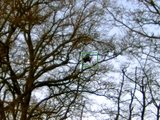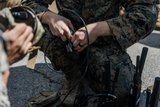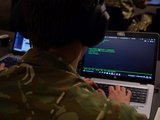Saab receives Thailand C2 upgrade order
Saab has announced that it has received an order from the Royal Thai Navy for the upgrading of the command and control (C2) system on the aircraft carrier HTMS Chakri Naruebet. According to a 26 April, 2012 statement, the order is worth MSEK 180.
Saab will carry out work to upgrade the aircraft carrier with the latest generation of C2 system, 9LV Mk4. It will also supply data-link equipment to the ship, which will allow communication between the ship and the Royal Thai Air Force’s Gripen fighter aircraft and the airborne radar system Erieye, carried by the Saab 340 AEW.
Saab is now on the Navy's three major vessels and with links to the Royal Thai Air Force's Gripen and Erieye, capabilities and resources can used more efficiently.
Saab is the main contractor to the Royal Thai Navy, and as well as supply of its own systems, its tasks will include procurement of third-party systems and responsibility for integration of all existing and new systems.
The contract mainly concerns the Security and Defence Solutions business area as the supplier of the command and control system. The Electronic Defence Systems business area will supply the Sea Giraffe AMB surveillance radar system as well as data-link equipment for communication with Gripen and the Erieye airborne early warning systems.
The contract will run between 2012 and 2015.
More from Digital Battlespace
-
![EID to unveil new vehicle communication system at DSEI]()
EID to unveil new vehicle communication system at DSEI
The Portuguese company’s naval communications system is in service across more than a dozen countries. It has turned to its home nation for support in developing a new vehicle based C2 system.
-
![Chess Dynamics successfully demonstrates Vision4ce AI-driven tracker]()
Chess Dynamics successfully demonstrates Vision4ce AI-driven tracker
The Vision4ce Deep Embedded Feature Tracking (DEFT) technology software is designed to process video and images by blending traditional computer vision with artificial intelligence (AI) algorithms to present actionable information from complex environments.
-
![Wave Relay devices cleared for security use on commercial systems in industry trend]()
Wave Relay devices cleared for security use on commercial systems in industry trend
Persistent Systems has been cleared by National Security Agency (NSA) to transmit sensitive data on commercial networks. The devices are added to the NSA’s Commercial Solutions for Classified (CSfC) component list which also includes other companies’ products providing the same security.
-
![UK teases cyber spending boost in Strategic Defence Review ahead of “imminent” release]()
UK teases cyber spending boost in Strategic Defence Review ahead of “imminent” release
The release of the UK’s Strategic Defence Review (SDR) has been long promised as mid-year. It is possible it could be as early as 2 June although the UK Ministry of Defence (MoD) continues to play its cards close to its chest.
-
![Intelsat emphasises SATCOM resilience for SOF in contested domains (video)]()
Intelsat emphasises SATCOM resilience for SOF in contested domains (video)
Intelsat outlines how its multi-orbit SATCOM architecture is enhancing connectivity and resilience for special operations forces operating in degraded and contested environments.
-
![US Space Force’s next-generation missile warning system moves forward with $500 million in new contracts]()
US Space Force’s next-generation missile warning system moves forward with $500 million in new contracts
Next-Generation Overhead Persistent Infrared (Next-Gen OPIR) satellites are intended to provide early warning of missile launches from any location worldwide and new ground stations will result in expanded coverage of critical missile warning.
























